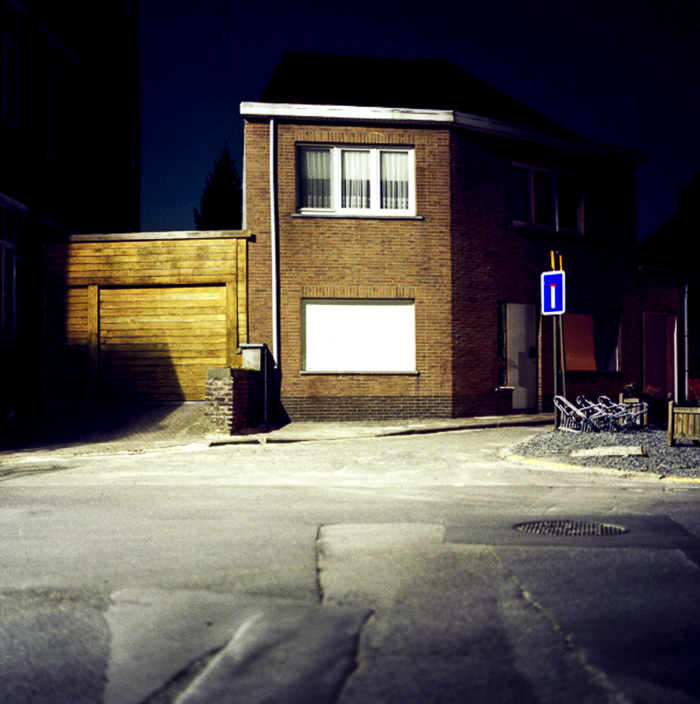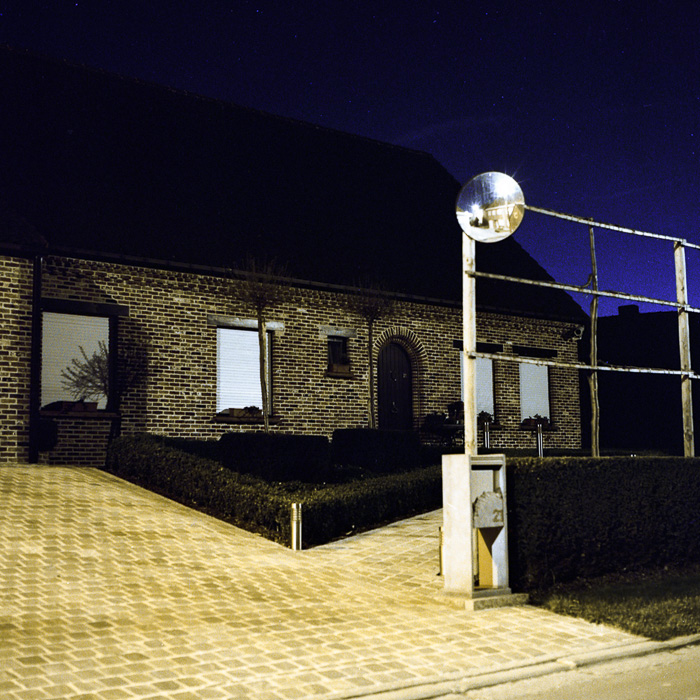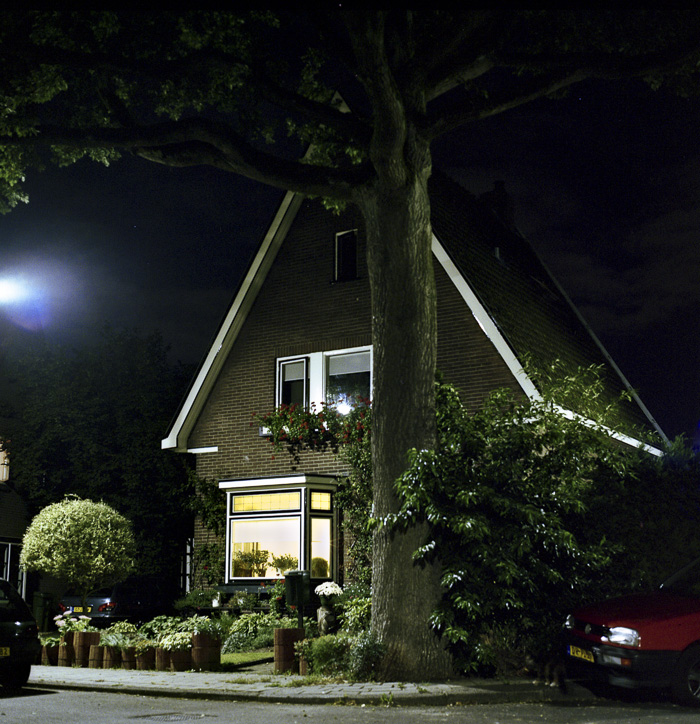The topics of safety, security, and personal control (of personal environments, spaces or relationships) are issues that I have been interested in for most of my artistic life. In one form or another, my subject matter has always dealt with these concepts – if not head on, then in an indirectly. When I relocated to Belgium, specifically to Flanders from the United States, these ideas that fascinate me and inspire my work lead to my series entitled “Sleeping Houses”.
The Sleeping Houses are in the Flemish region of Belgium, an area that has a cultural habit of shuttering their houses every evening: whether it is warm, cold, light or dark doesn’t seem to matter- what matters is closing out the outside world. Manicured gardens and well-tended houses are shut tight for the night with no signs of interior life, while standing in wait for someone to awaken them. This has the effect of making towns and villages feel empty, abandoned and surreal to the non-native visitor or resident.
As one travels from the Flemish region of Belgium in the direction of the Netherlands at night, you don’t need a map to know when you have crossed the border. Flanders’ closed and shuttered houses give way to the Netherlands' open and glowing houses, houses presenting all their contents and interior activities for the passer-by to see. Houses who’s windows act as beacons on the street, inviting you closer and asking you to look in to see what is happening.
The Netherlands Watchful Houses stand awake, waiting to lure you in or lure out the voyeur in you, all the while presenting an acute awareness of their cultural identity. On their own or in direct relation to the Sleeping Houses of Flanders both are tied intrinsically to their own cultural story.





















